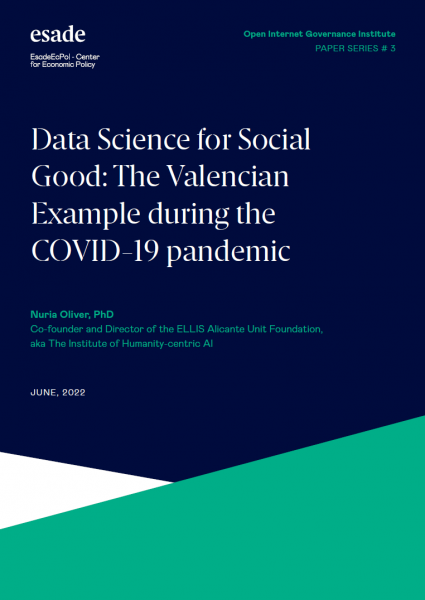
Data Science for Social Good: The Valencian Example during the COVID-19 pandemic
Nuria Oliver
18 Jul, 2022
Data Science is a discipline of tremendous value in the public sector for at least two essential reasons:
→ it enables the design of public policies based on data and evidence, as opposed to intuitions, obsolete information, or political interests.
→ it allows the necessary empirical evaluation of the impact of the deployed public policies, to determine their strengths and weaknesses.
Despite its potential, the systematic use of data to support public policy making is still rare in most parts of the developed and developing world. In this article, I provide a summary of an internationally recognized example of leveraging data to support policy-making during the COVID-19 pandemic in Spain. I present the work that we carried out between March of 2020 and March of 2022 in the “Data Science against COVID-19 Taskforce”, a pioneering experience in the Valencian Region of Spain. This taskforce –which I led– was composed of a multi-disciplinary team of 20+ scientists from several universities and research centers in the Valencian Region of Spain, working closely with the region’s policymakers at the Presidency level.
We focused on work on four impact areas to the use of Data Science in the fight against the coronavirus pandemic:
1. Modeling aggregate human mobility; which allowed us to:
-
- monitor the impact of containment measures on the real mobility of citizens;
- identify areas where the confinement measures had a greater or lesser impact;
- quantify the success of the #stayathome campaign, as well as the measures adopted to restrict night mobility and perimeter closures of the Valencian region of Spain
- model the impact that reduced mobility had on the progression of the coronavirus
- better predict the spread and determine the usefulness of selective lockdowns – track the return to normality
2. Developing computational epidemiological models, devoted to to make predictions about the evolution of the pandemic not only under the current conditions, but also under different scenarios of confinement and control measures of the pandemic, pre-existing immunity, vaccination or contact tracing.
3. Developing predictive models at the sub-regional (health department) level to estimate relevant variables for guiding policy decisions.
4. Applying citizen science via a large-scale online survey called the COVID19Impactsurvey, a key tool to to shed light on issues of great public importance for which there is no systematically captured data; e.g. the role of close contacts, a first evaluation of psychological impact, or the difference on the ability to follow lockdowns depending on socio-demographic or socio-economic conditions.
This effort is an inspiring example of close collaboration between the scientific community, citizens, and a public administration to ensure that public policies are effectively based on evidence and expert knowledge.


PhD from MIT. Co-founder and Director of the ELLIS Alicante Unit Foundation, aka The Institute of Humanity-centric AI.
View profile

